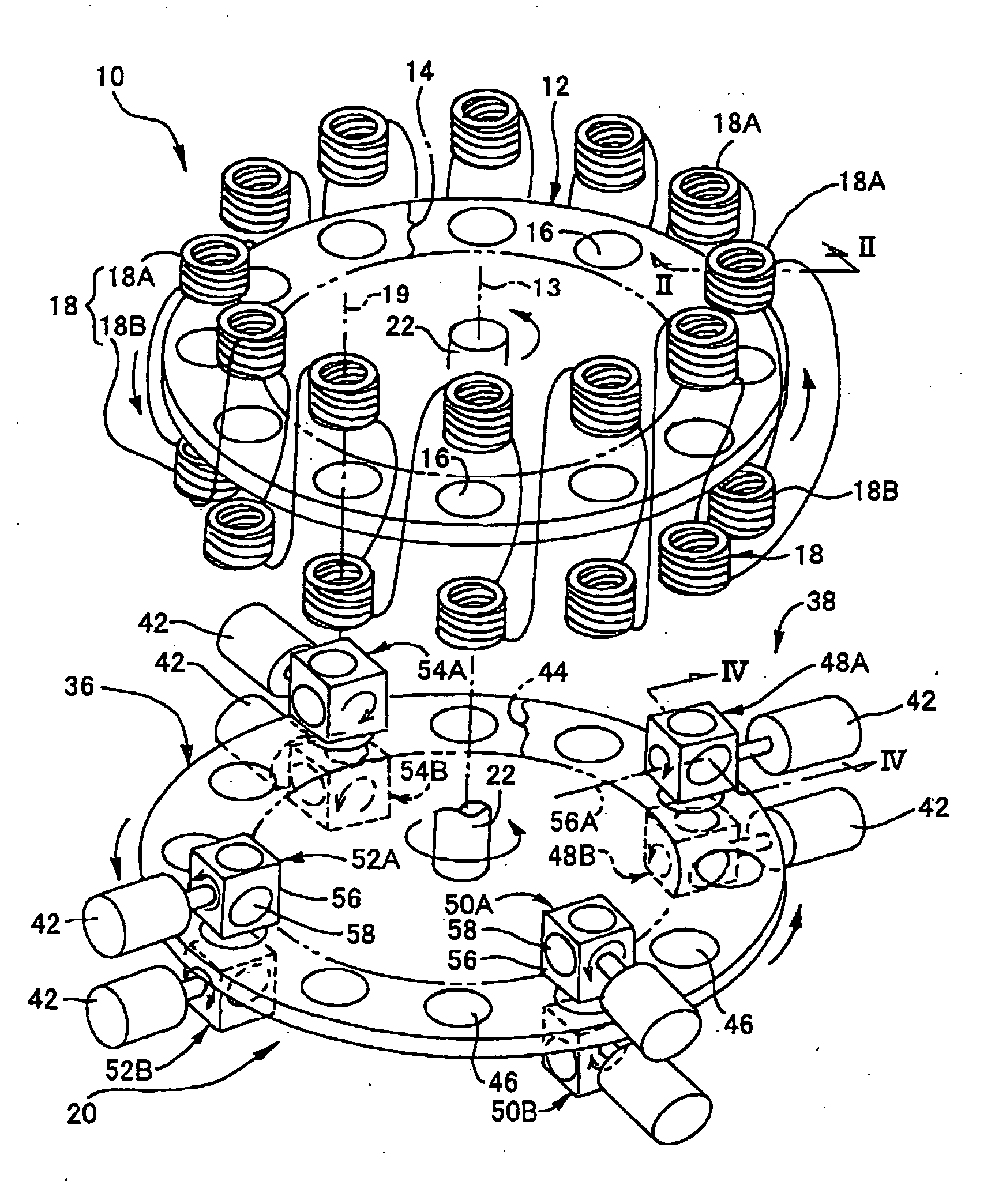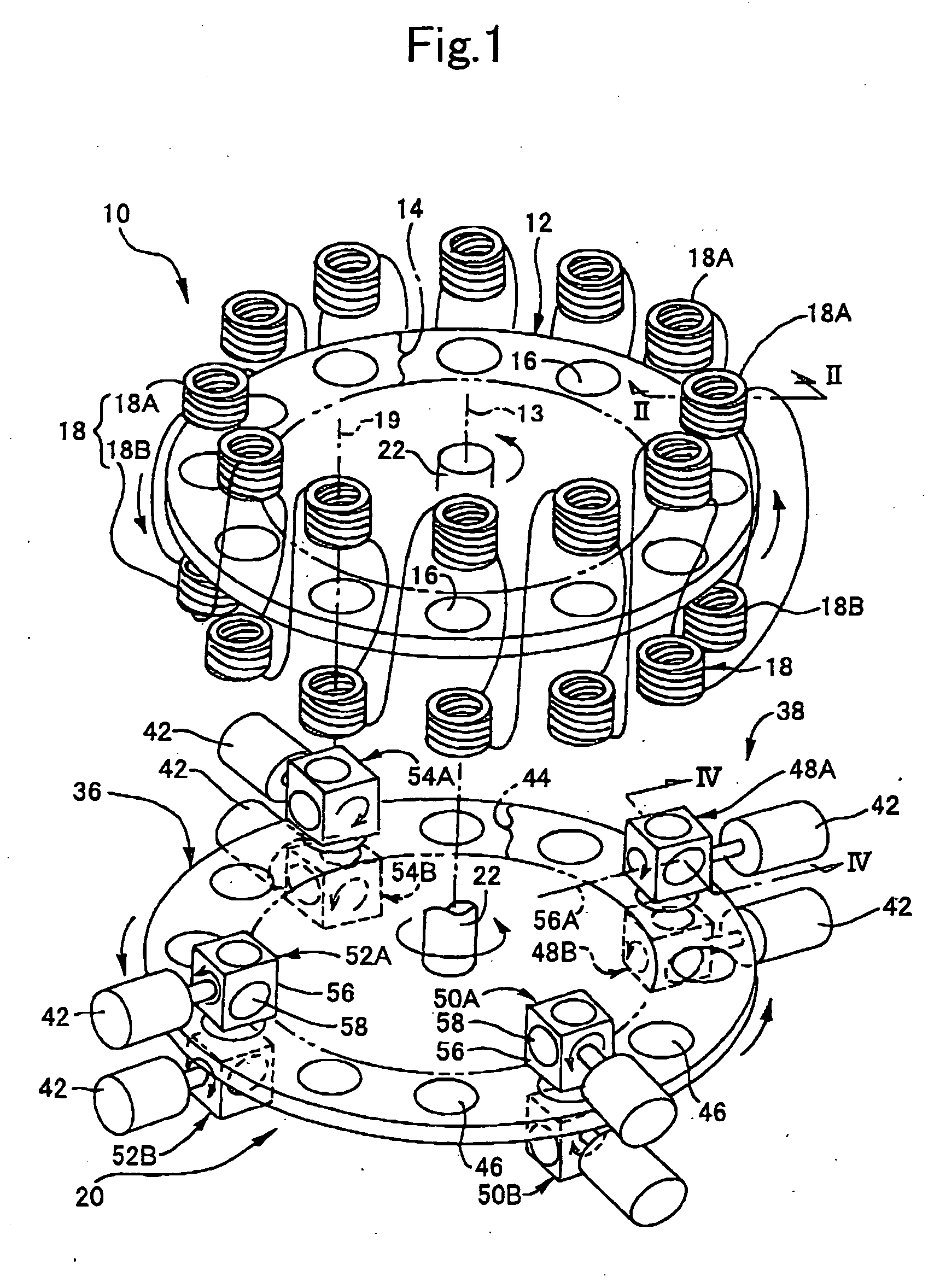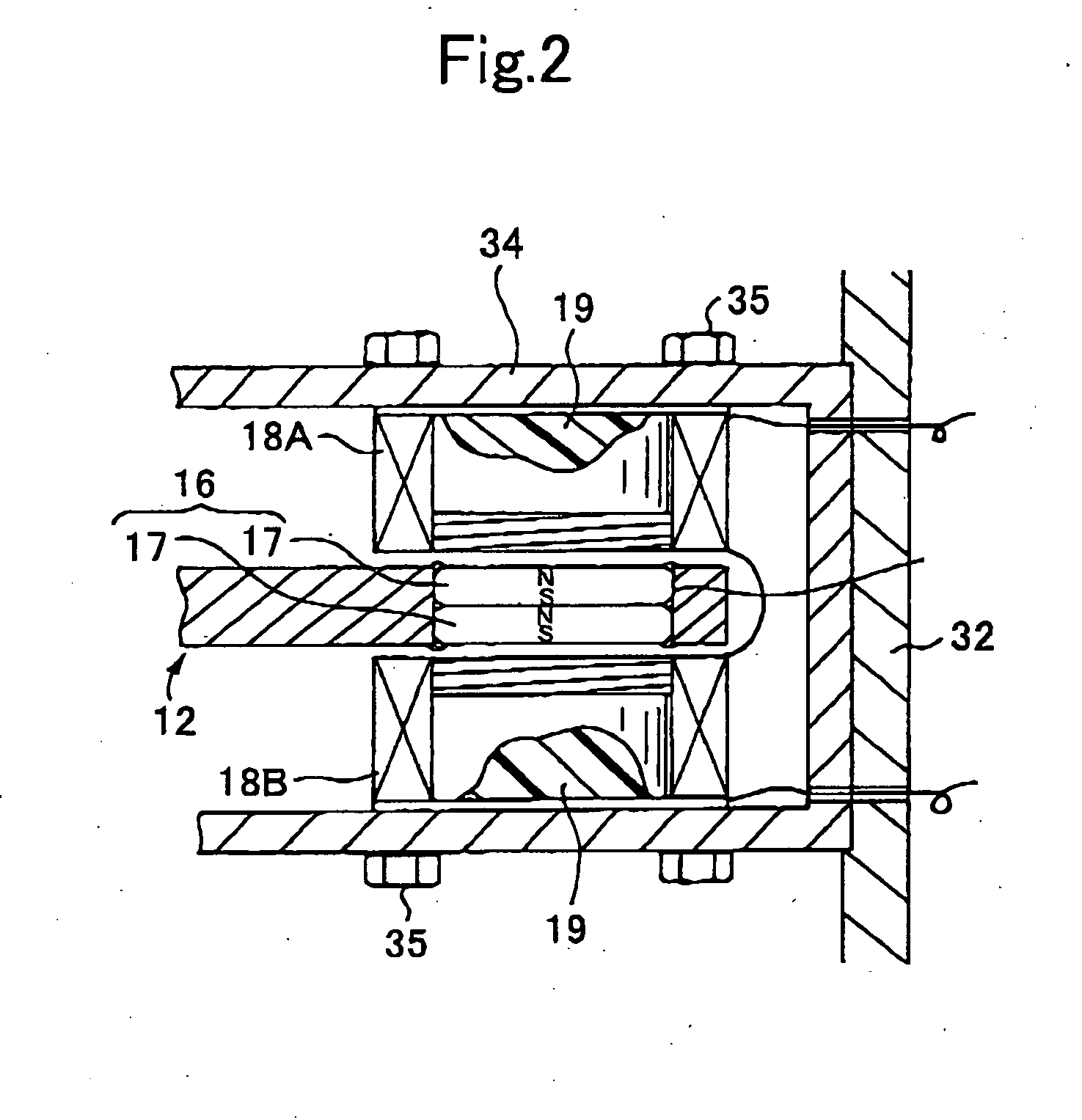Power generator and torque amplifier
a technology of torque amplifier and power generator, which is applied in the direction of machines/engines, magnetic circuit rotating parts, and shape/form/construction of magnetic circuits, etc., can solve the problems of poor practicality, risk of leakage of magnetic flux from ferromagnetic members, and so as to achieve efficient output power, reduce the effect of deterioration of magnetic force and large torque amplification coefficien
- Summary
- Abstract
- Description
- Claims
- Application Information
AI Technical Summary
Benefits of technology
Problems solved by technology
Method used
Image
Examples
example
[0115] Two disc-shaped aluminum rotors having a diameter of 120 cm and a thickness of 20 mm were prepared. A driven rotor for a torque amplifier was formed of an aluminum disc-shaped plate having a diameter of 120 cm and a thickness of 20 mm. Each of a plurality of permanent magnets to be attached to the rotors, the driven rotor and a plurality of magnet wheels was formed by superimposing three doughnut-shaped neodymium-based (Nd—Fe-Bo) magnets (NEOMAX available from Sumitomo Special Metals Co., Ltd.) having an outer diameter of 76 mm, an inner diameter of 42 mm and a thickness of 6 mm. The permanent magnet had magnetic characteristics including a magnetic flux density KG of 3.5 and a magnetic force of 55 Kg. An annular zone was defined in each of the rotors in such a manner that the center of the width thereof along the outer periphery of the rotor has a radius of 55 cm from the rotational axis of the rotor 72 of the permanent magnets and 60 of permanent magnets were attached, resp...
PUM
 Login to View More
Login to View More Abstract
Description
Claims
Application Information
 Login to View More
Login to View More - R&D
- Intellectual Property
- Life Sciences
- Materials
- Tech Scout
- Unparalleled Data Quality
- Higher Quality Content
- 60% Fewer Hallucinations
Browse by: Latest US Patents, China's latest patents, Technical Efficacy Thesaurus, Application Domain, Technology Topic, Popular Technical Reports.
© 2025 PatSnap. All rights reserved.Legal|Privacy policy|Modern Slavery Act Transparency Statement|Sitemap|About US| Contact US: help@patsnap.com



